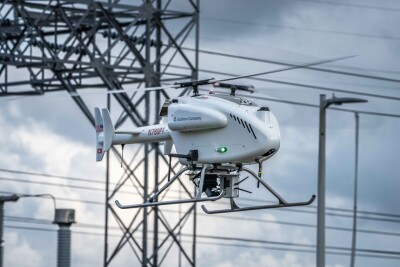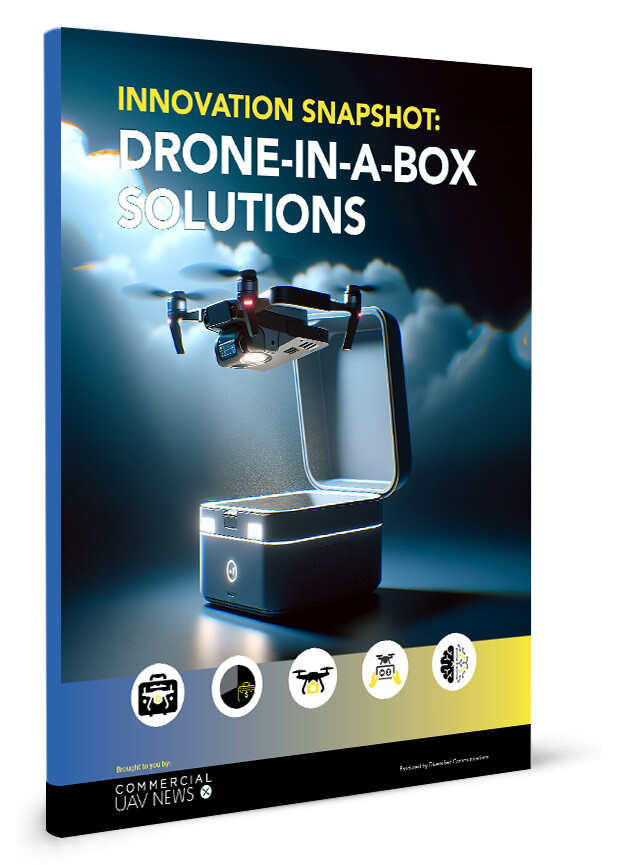We’ve explored what LAANC (Low Altitude Authorization and Notification Capability System) opening up the sky means for commercial drone operators in the present and future, and it’s nothing short of a game-changing development. The ability to receive automatic approvals to operate in controlled airspace is something professionals have been asking the FAA to enable for a long time now, and it’s easy to see how the model they’ve created with LAANC could be expanded to easily enable other types of operation that are not currently permitted under Part 107.
That potential development is especially exciting to consider in light of the recently
announced expansion of LAANC itself, as the FAA is set to conduct a nationwide beta test that will deploy LAANC incrementally at nearly 300 air traffic facilities covering approximately 500 airports. These capabilities will be rolled out across the United States in the following areas beginning on April 30th:
South Central USA April 30, 2018
Western North USA May 24, 2018
Western South USA June 21, 2018
Eastern South USA July 19, 2018
Eastern North USA August 16, 2018
Central North USA September 13, 2018
Skyward has already laid out the details associated with
when LAANC is going to go live in specific areas and for specific facilities during this rollout, but we wanted to get a better sense of what this announcement would mean for commercial drone operators that are working today, and how it might impact future capabilities related to managing drone traffic and improving aviation safety. To do so, we connected with Matt Fanelli, Director of Strategy at Skyward, who has extensively
written about and
presented on topics related to the present and future of LAANC.
Jeremiah Karpowicz: Skyward has talked about the “when” regarding LAANC, but can you talk about about the “why” when it comes to the thought process behind this rollout, in terms of the regions, specific airports and timetable? Are there plans to see the facilities or areas expanded upon in the near future? Matt Fanelli: For the prototype evaluation phase which started in October 2017, the FAA wanted to select a variety of airspaces to test a wide range of scenarios. For example, the Anchorage Basin area in Alaska was chosen because it includes a complex set of overlapping airspaces from three airports and a military base. Finding successful ways to deconflict this and give the appropriate authorities the information they needed with LAANC was key to the program’s success. The FAA actually learned a lot about the difficulties in controlling access to airspace in the Anchorage region due to the overlapping UAS Facility Maps (UASFMs) there. For the beta rollout, not all airports in the US are included. The beta rollout includes
500 federally operated facilities in the US. Those ATCs run under contract by private companies (like
Serco Management Services,
Midwest Air Traffic Control Services, and
Robinson Aviation) are not included in the beta program.
There are currently no plans to add to the list of facilities on the FAA’s side of the program. We’ve talked with the FAA about coordinating with the armed forces facilities (Navy, Army, Air Force bases and restricted airspace), as well as the towers contracted to private companies that currently aren’t a part of the rollout, but those developments would likely be in 2019 or beyond.
For now, please let us know which areas you’d like to see added to LAANC, reach out to the local ATC facility manager (not the airport manager) and we’ll continue to advocate for opening up more software-defined airspace with our FAA partners.
What type of person or professional is going to be most impacted by this development? At Skyward, we’ve seen significant adoption of drone technology in commercial construction, media, and insurance. Each of these industries is going to benefit from LAANC because they often require access to controlled airspace. Waiting 60 days to six months for an authorization to fly is not going to work when you’re covering a breaking news story, or even when you’re trying to film site progress for a construction job. Now, thanks to the FAA and private sector collaboration to develop LAANC, businesses will receive permission to fly in seconds. It’s a key technology to really unlock the ROI of commercial drones.
You mentioned that you expect nearly every business operating drones commercially to benefit from LAANC when it opens up the airspace in their area, but what do those benefits look like? Are they monetary, or more related to savings in time? Or something else?Drone operators will save time and either save or make money when LAANC is live in their area. Today, many businesses are not using drones because they can’t get timely approval to fly in controlled airspace. For those that offer drones as a service, access to controlled airspace is a huge barrier preventing them from accessing their full range of clients or forcing them to continue applying for lengthy manual authorizations. Businesses that use drones to replace helicopters will see immediate cost savings as they are able to fly for more projects in more places with LAANC.
Your detailed rollout schedule of all airports going live with LAANC is pretty thorough, but what options are available to someone looking for info about the airport in their area if it’s not on this list?The beta program will bring LAANC to 500 federally operated airports. If drone pilots need to access controlled airspace for an area that does not offer LAANC, they will need to go through the manual authorization process. Keep in mind that there is greater chance for success if operators apply for authorizations to fly at or below the altitude of any UASFM grids for that area. Operators that need to apply for an authorization can follow the instructions at
FAA Drone Zone. Long term, we think LAANC could be expanded to include those interested contract towers and other airspace managers (like military bases), but that isn’t on the FAA’s roadmap just yet.
Some might think the skies will be less safe with more drones in it, but connecting key information about each drone operation to the local ATC tower means the skies will actually be more safe, doesn’t it? Absolutely, LAANC will give important information about drone activity to ATC towers and give controllers the ability to cancel LAANC authorizations via push notification in the event of an emergency to ground UAS traffic in a specific grid or area. This added layer of transparency and control heightens the safety of the airspace while simultaneously offering more access to more operators.
What sort of future opportunities do you believe LAANC will open up on a technical level? Perhaps something related to instant approvals for other types of operation that are not currently allowed under Part 107?We see LAANC as the first steps and building blocks of a UTM. We’re working hard to bring Remote ID to fruition as well and these two technologies will be game changers for the industry and begin to unlock the real potential of commercial drones. We’ll continue to build technology to manage drone traffic and improve aviation safety. When this is done correctly, it will allow each drone program to focus on the job, not the rules.
What would you say to a commercial operator who had a need to fly a drone in controlled airspace, but has not yet taken a look at how or if LAANC can help them? What makes now an especially ideal time to do so? Take a close look at the rollout schedule to see when airspace near you will be accessible via LAANC. Once your region goes live, you’ll be able to access controlled airspace in seconds instead of months. If your area won’t be participating in LAANC this year, consider applying for a wide area authorization. The wait times should be dropping as many applicants will be able to use LAANC and no longer need to wait for manual authorization approval.






.png.small.400x400.png)









Comments